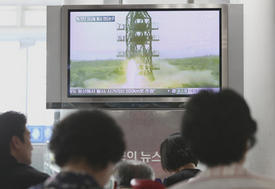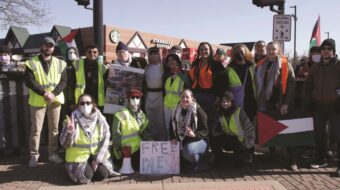
In an article recently published in the journal Science, noted scientific journalist Daniel Clery has raised serious questions about the actual nature of the May 25 underground explosion claimed by the Democratic People’s Republic of Korea [North Korea] as a nuclear test, provoking worldwide condemnation. Clery points out that while the DPRK’s first nuclear test in 2006 released traces of radioactive xenon gas detectable as far away as Canada, this time super-sensitive U.S. ‘sniffer’ planes overflying the zone could not detect so much as an atom of anomalous nuclear material.
The May 25 explosion on the Korean Peninsula was detected by geological and nuclear monitors around the world as a magnitude 4.5 tremor consistent with a human-made underground explosion, but according to Science, the international Comprehensive Nuclear-Test-Ban Treaty Organization (CTBTO) network of over 200 atmospheric sensor stations around the globe reported no measurable spike in artificial radioactive elements anywhere in the world, not even in South Korea, on instruments that can detect ‘a couple hundred atoms in a cubic meter of air.’
Objective observers and scientists remain puzzled about these results, pointing out that it is highly unlikely that North Korea would be technically advanced enough to produce a perfectly-contained nuclear explosion, which would have to take place at extreme depth in rock strata easily enough melted to produce a perfectly airtight containment bubble and strong enough that the bubble would not collapse and release nuclear fission products into the environment immediately after the explosion. However, it is equally improbable that North Korean scientists could easily assemble the wherewithal to produce an underground chemical explosion of the observed magnitude, even though such a blast would be technically possible using currently available high explosives. Some scientists have even dismissed as ‘conspiracy theory’ suggestions that the May 25 test was non-nuclear.
Even so, suspicions that the most recent North Korean test might have been faked evoke memories of ambiguous threats by former Iraqi dictator Saddam Hussein about weapons of mass destruction, claims which were then used by the Bush administration as convenient justification for the American invasion and occupation of Iraq even though, after careful international inspections, both sides were well aware that Iraqi WMDs no longer existed.
Given that both the DPRK and western military analysts have a clear self-interest in discounting questions about the threat of a practical North Korean nuclear arsenal, the most politically significant aspect of this controversy may be the degree to which scientists’ doubts are being underplayed and silenced in American media reports. While the explosion itself was given top-headline status, a cursory review of New York Times headlines during May and June shows no mention of scientific questions surrounding the May 25 explosion.
Although President Obama has repeatedly advocated nuclear disarmament, the United States and the DPRK are still among only nine countries of the world which have not ratified the Comprehensive Nuclear Test Ban Treaty.











Comments